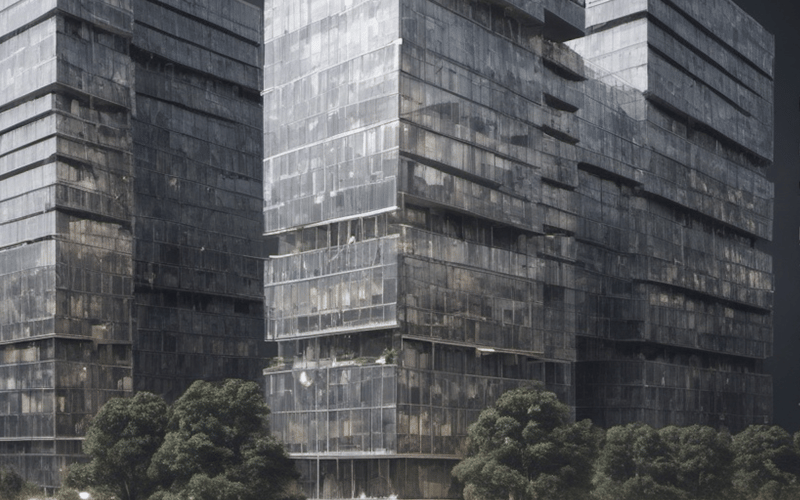Understanding the Causes of Poor Software Architecture
At some point in their careers, many developers encounter software architectures that are true mazes of complexity, lacking apparent organization and challenging even for the most experienced. This scenario is particularly common when joining a new company, where you may be assigned to take over a legacy project or integrate with an ongoing team. The initial reaction is often one of frustration: complaints about the lack of tests, the need to change many lines of code in one place, and the total absence of standards are typical.
However, before we rush to criticize or even consider giving up, it’s crucial to reflect on a key idea: “There is no bad architecture without context.”
The Origin of Bad Architectures
A poor software architecture doesn’t emerge from nowhere. No one starts a project intending to create something dysfunctional or difficult to maintain. These problematic architectures result from a series of factors that accumulate over time. Let’s explore some of these factors:
-
Lack of Personnel and Resources
Poorly designed projects often stem from a shortage of human or financial resources. When a team is overwhelmed, lacking time or enough people, decisions are made reactively without proper long-term planning. This can lead to shortcuts in development, a lack of refactoring, and the accumulation of technical debt, which eventually turns into an architectural nightmare. -
Poor Organizational Structure
As Conway’s Law states: “Organizations that design systems are constrained to produce designs that are copies of the communication structures of these organizations.” If communication within a company is fragmented, with silos between departments and teams, the software architecture will reflect that fragmentation. System modules may be isolated, redundant, or poorly integrated, mirroring the lack of internal cohesion within the company. -
Inadequate Management of Technical Debt
Technical debt is inevitable in any software project. However, when not managed properly, it can accumulate and become a critical issue. The lack of effective management of technical debt, where “debts” are continuously postponed, leads to an architecture that becomes increasingly difficult to maintain and expand. -
Lack of a Quality Culture
Often, code quality is sacrificed in the name of quick delivery or meeting tight deadlines. In companies where there is no strong quality culture, developers may feel they lack the support or time needed to apply best practices, such as automated testing, code reviews, and continuous refactoring. This can lead to the creation of code that, in the short term, seems to meet needs, but in the long term, becomes unsustainable and difficult to maintain. -
Legacy Dependencies and Technologies
In many projects, technological decisions are based on tools or frameworks that, while appropriate at the beginning, become obsolete over time. Maintaining these legacy dependencies can force developers to create complex and clumsy solutions to work around the limitations imposed by outdated technologies. The lack of updates and reluctance to adopt new technologies can exacerbate the problem, resulting in rigid and inflexible architecture. -
Lack of Documentation and Shared Knowledge
Insufficient or nonexistent documentation is one of the main reasons why software architectures become confusing and difficult to work with. When knowledge is centralized in a few individuals or poorly documented, the departure of a team member can leave significant gaps in system understanding. This can lead to incorrect assumptions, duplication of efforts, and solutions that do not follow a consistent pattern, increasing the complexity and fragility of the architecture.
What Can We Do?
Before harshly judging a poor architecture, it’s essential to understand the context that led to the situation. This allows us not only to better manage the current system but also to prevent these issues from recurring in the future.
-
Context Analysis: Understand the project’s history and the circumstances that led to its current state. This may include conversations with former team members, reviewing historical documentation, and analyzing code commits over time.
-
Continuous Refactoring: Establish a continuous process of refactoring and code improvement, focusing on critical areas where maintenance is most challenging.
-
Education and Training: Invest in training so the team understands the importance of good architectural practices and how to apply them daily.
-
Effective Communication: Work to improve communication between development teams and other areas of the company, ensuring that everyone is aligned with the project’s goals and best practices.
-
Adherence to Design Patterns: Respect and apply established design patterns to solve common problems in software design. Design patterns provide proven solutions and help maintain a consistent and scalable architecture.
-
Maintain a Strong Engineering Culture: Foster a culture that prioritizes engineering excellence, including code quality, adherence to best practices, and regular knowledge sharing. A strong engineering culture promotes best practices and continuous improvement, ensuring that architecture evolves in a healthy manner.
-
Implement Robust Testing Practices: Establish comprehensive testing strategies, including unit tests, integration tests, and end-to-end tests, to ensure that the architecture remains reliable and maintainable. Testing helps identify and address issues early in the development process, reducing the risk of accumulating technical debt.
-
Regular Code Reviews: Conduct regular code reviews to ensure that code quality standards are maintained and to catch potential issues before they become significant problems. Code reviews facilitate knowledge sharing and help enforce consistent coding practices across the team.
In summary, poor architecture often reflects deeper organizational issues. By addressing these root causes with understanding and targeted strategies, we can transform problematic systems into robust and sustainable solutions.
Source link
lol

